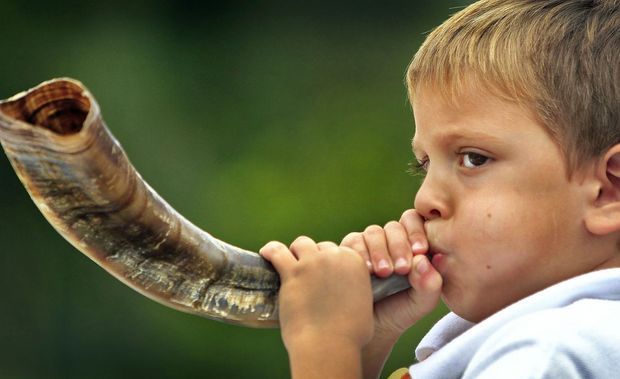
Today is Rosh Hashanah – the Jewish New Year. It’s a day when Jews reset the calendar and “reset” their lives. It starts the ten-day period of reflecting and repenting for sins and transgressions.
One of the most sacred customs of the holiday is blowing the shofar. It is a ram’s horn that sounds like a trumpet. The symbolism of the horn comes directly from the biblical story of Abraham and Isaac (Genesis 22.13). Blowing the shofar is supposed to grab our attention and get us focused on the tasks at hand - the three virtues of the holiday, repentance, prayer and acting righteously.
I’m forty-six. I attended Sunday School. I led a bat mitzvah service. I come to these services every year. However, today was the first time I learned that the shofar is sounded one hundred times. Now, I can’t promise that I’ve always paid attention in class or services. But, I am pretty sure this has never been mentioned. Besides, the best part of the shofar service for me has always been the way it breaks up the service (it can get long). Anyway, I never counted the sounds.
If you follow my blog posts, you know my backstory. I lost my son to an undetected and treatable heart condition, and started a foundation in his name to raise awareness about sudden cardiac arrest and death in children. It is because of this part of my life that the 100 times stood out.
Sudden cardiac arrest is not just an adult thing. It takes the lives of thousands of children every year and is the #1 cause of death of student athletes. Whether it is a child or an adult, cardiopulmonary resuscitation (CPR) helps keep them alive when they are in arrest.
CPR is the manual way to pump blood throughout the body. The real pump, the heart, has stopped doing its job. So, by pressing on the chest, you provide temporary relief and keep blood and oxygen flowing to the vital organs until the AED device and first responders arrive.
CPR is easy. Watch how quickly these young kids get the idea and perform CPR on their stuffed animals and dolls. Then, read this article about how two nine year old boys saved a babies life because they saw a poster about CPR in their cafeteria. By the way, there is no more mouth to mouth. Just compressions.
The guidelines tell us that we should do 100 chest compressions per minute. There’s that number, again. One hundred. Is there something significant about it? In both instances, it is being used as a call to action.
Back in biblical times, the shofar police determined that 100 shofar sounds were needed so that Jews would perk up and fulfill their New Year obligations. If Jews embrace these three virtues, it can be life changing. Today, the CPR police tell us that 100 chest compressions can keep someone who is in cardiac arrest alive. If people embrace this guidance, it can be life saving.
The third virtue of this holiday season is tzedakah (tseh-dah-kah). It literally means justice, but it is also used to describe charity. Jews are commanded to give to and help those in need.
I can think of no greater way to fulfill this obligation than to learn CPR. It doesn’t cost anything and you don’t need to get certified. In two minutes, right now, you can learn to save a life. That’s less time than you spent in the bathroom today avoiding the Rabbi’s sermon. Happy New Year.
For more information about CPR, click here.
For a CPR playlist (100 beats per minute), click here.
